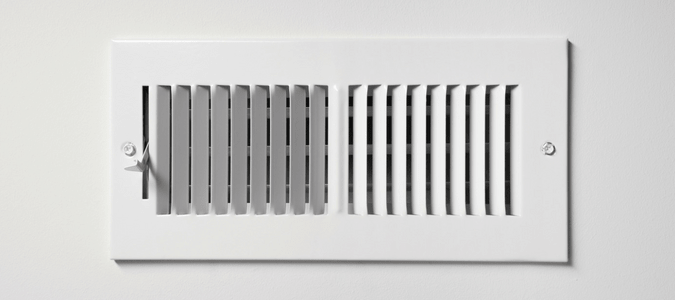It’s a fact of life: As winter approaches and outdoor temperatures start to drop, our heating bills start to rise. Fortunately, you don’t have to break the bank by spring just to stay warm. There are several ways to keep your home comfortable without the high energy bill. Even small acts can go a long way toward saving money over the long winter months. For example, adjusting the thermostat when you’re away may not seem like a big deal, but it can make a difference over the course of a month.
Saving on your heating bill really means finding ways to reduce your energy usage all while still keeping your home warm and comfortable. A good place to start for most homeowners is taking advantage of nature’s heater—the sun. During the daytime, open the blinds or curtains on the windows located on the south side of your home to let the sunlight in.
Here are several other ways to save on your heating bill.
Keep Drafts Out
After opening blinds to let sunlight in, close your curtains when the sun goes down. This measure can help to keep the chill from coming in through your windows and permeating your home.
If closing the curtains doesn’t help with drafts, you may need to do some weatherizing. In most areas, you can have a free home energy audit performed to provide you with recommendations on where you need to apply weatherstripping around windows and what types of weatherstripping to use. If your windows are noticeably drafty, these may only be short-term solutions. In the longer term, you may need to have your windows repaired or replaced.
You can address drafty doors by replacing old weatherstripping or adjusting the thresholds. This will ensure that air can’t pass through in either direction. Drafty doors don’t just let cold air in; they also let warm air out.
Windows and doors aren’t the only places that can be drafty. Chimneys, vents, recessed lighting, outdoor hose bibs and even the fireplace can let cold air in and warm air out if they aren’t properly insulated or sealed. You can use caulk to seal off gaps in these areas, and keep the flue closed when you aren’t using the fireplace.
Bundle Up
If you are serious about cutting costs, you may consider wearing layers when you’re at home so you can set your thermostat to a lower temperature. While this may seem silly, it works! Setting your thermostat lower and wearing a sweater will help you save on energy costs, all while still staying warm and comfortable. You can also set the temperature lower at night, since many people find it more comfortable to sleep in a cooler room under warm blankets anyway.
Maintain Your Heating System
The most important part of maintaining your heating and cooling system is changing out the filters regularly. This will keep your heater working as efficiently as possible. Another important aspect of maintenance for many homes is having the furnace and air conditioner checked by a professional once a year. A professional can help to maintain the system and can help diagnose and prevent problems over time.
Check Your Attic Insulation
If you want to save on heating costs, you can also make sure your attic has enough insulation. If the insulation in your attic is level with the floor joists, you may need to add more. Most homeowners don’t realize the degree to which this will help to keep your home warmer in the winter. Heating and cooling professionals recommend a minimum of 10 to 14 inches of fiberglass insulation in an attic. If your attic needs more, or if you aren’t sure, your best course of action is to contact a professional. Handling insulation can pose health risks and licensed technicians have the knowledge and tools needed for this type of job.
All the above measures can make a difference in your energy bills, especially when used in tandem. As we already mentioned, you can also contact your local utility company to conduct an energy audit of your home. This can be a good starting point for learning where your home might be losing energy and give you a longer-term to do list if you need to make improvements in stages.
Keep in mind that some energy audits will only give you general information on why your electric bill is so high. You may need to follow up with a specialist for a second opinion on what actionable steps you can take. A specialist can also maintain your heating system and can confirm your unit is running at peak efficiency.
Previously, we mentioned that having enough attic insulation is a good way to make your home energy-efficient. Keep reading for more information about insulation and what to do if you realize you need more.
How Much Insulation Do I Need in My Attic?
You’ve heard about the benefits of adding attic insulation to improve the energy efficiency of your home. But, you may be wondering, “How much insulation do I really need in my attic?” Most professionals recommend that attics have 10 to 14 inches of fiberglass insulation. You probably don’t need to take a ruler up to your attic to get an idea of whether you need more insulation. Simply going up to your attic and taking a visual scan of the area can tell you quite a bit.
There are two basic visual cues that will indicate you could benefit from insulation. If you can see the wooden joists that make up the floor space of your attic, you’re likely a good candidate. If the insulation is actually below the level of the joists, chances are that your home could be more energy efficient if you added more.
Heating specialists take a more specialized approach to determining the right insulation levels for a home. Attic insulation is measured by its R-value, meaning its ability to resist heat flow. R-30 is considered the minimum R-value necessary to keep a home insulated and energy-efficient. Even new homes can have too little attic insulation and be lacking in energy efficiency. Contacting a professional to conduct a home energy audit is the best way to determine how much insulation currently exists in your attic, as well as how much should be added to bring up your R-value.
What Are My Options for Fiberglass Insulation?
Fiberglass insulation comes in many forms, including batts or blankets of insulation, as well as loose insulation. You can use a mixture of these forms in your attic, so you don’t have to add the exact same kind of insulation that is already there. For example, if your attic has insulation batts and you know it needs more to bring it up to R-30 or above, you could add more batts or you could choose to add loose insulation on top of the existing batts.
Loose fiberglass insulation can be a great way to increase the insulation in your attic. This is because it can be blown into spots that are hard to reach or oddly shaped. Many home improvement stores offer insulation blowers for rent. However, fiberglass should be handled with caution. Most homeowners are better off hiring a professional to handle this type of job. A professional can determine the exact amount of attic insulation that is needed and can apply the new insulation in the right areas to increase the energy efficiency of your home.
Another good way to keep your heater working efficiently is to regularly change your filter. But, many homeowners don’t know how often to change their filters.
How Often To Change Your HVAC Filter
Most homeowners know their filters should be changed on a regular basis, but it can be hard to determine how often to change your HVAC filter. Is once a month enough? Could you get away with changing it less often, or should you actually change it out more than once a month?
A good rule of thumb is to change your filters once every three months. But, keep in mind that each home may vary, depending on a number of factors. You may need to change your filters more frequently if you:
- have pets,
- use your system often,
- live in a large home,
- have many people living in your home,
- use fiberglass filters,
- have younger children living in your home or
- have someone in your home who has allergies or asthma.
Depending on these factors, you may need to change your filters once a month. Or, if you live in a mild climate by yourself and you don’t have pets, you may be able to go longer without changing your filters. Also, keep in mind that while higher-quality filters may cost more than other types of filters, they are also more likely to work better and support the efficiency of your heating and cooling system.
To be proactive, you can check your filters once a month. Inspect your filters to make sure that they aren’t getting too clogged with dust, hair and other debris. Dirty filters prevent proper air flow, which greatly reduces the system’s ability to work efficiently. Seriously clogged filters can even cause your heater to not turn on.
If you’re not sure how often you should be changing your filters, you can always ask a professional. During maintenance, a specialist can give you advice on how often to change your filters. Also, many professionals will change your filters for you during your maintenance call. That way, you have one less thing to worry about.
ABC Can Keep Your Home Energy-Efficient
It’s difficult for an untrained eye to find all the ways drafts are getting into a home and turning it from nice and cozy to chilly. If you want to make your home heating system more energy-efficient, contact ABC Home & Commercial Services. Our specialists can give you recommendations you may not have thought of. Also, we can maintain your heater, and make any repairs, so you know everything is working just as it should.



